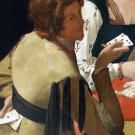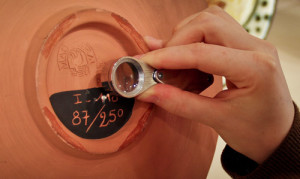Art Consultants and the Agency Problem

When I was Director of a New York City gallery people often came in, saw an artwork they liked and then sent someone whom they called “my friend,” or “my dealer,” “my adviser,” or “my expert” to look over the piece and negotiate for them. Today more and more collectors are buying art through this kind of of representative. In fact there’s a whole profession of people calling themselves “art consultants.” I’m now one of them.
Such representatives theoretically are a great thing for collectors. There’s a widespread perception that dealers are used-car-salesmen-type hucksters eager to take advantage of honest folks. Sadly this perception is sometimes true. Many dealers will tell you that whatever they happen to have in their gallery is absolutely the best thing you can possibly buy and the price is a fantastic bargain. They’ll routinely badmouth anything you may like from their competitors out of sour grapes or just for sport, unless they can somehow cut themselves in.
So what could be wrong with getting an experienced professional to help you make sure you’re getting a good piece of art at the best price?
Well, what’s wrong is a well-known business dilemma called the Agency Problem, which Investopedia defines as follows: “A conflict of interest inherent in any relationship where one party is expected to act in another’s best interests. The problem is that the agent who is supposed to make the decisions that would best serve the principal is naturally motivated by self-interest, and the agent’s own best interests may differ from the principal’s best interests.”
Thus at my old gallery the first thing out of the mouths of some clients’ “friends” was sometimes: “So what’s my cut?” or words to that effect.
 When faced with a choice among several works that the client liked, a lot of “friends”made their recommendation based on the highest rebate to them, or kickback, or whatever you want to call it. Dealers like to call it a “commission.” Such commissions are so common that many people in the art world think of them as simply the way business is done. Not everyone necessarily agrees, including a judge in the U.K. who recently ruled against a dealer who sold a painting for a million dollars more than it was consigned for and then pocketed the difference as his commission (this case and others are related in an eye-opening article by Adil Essajee entitled “Commissions – the best kept secret?”).
When faced with a choice among several works that the client liked, a lot of “friends”made their recommendation based on the highest rebate to them, or kickback, or whatever you want to call it. Dealers like to call it a “commission.” Such commissions are so common that many people in the art world think of them as simply the way business is done. Not everyone necessarily agrees, including a judge in the U.K. who recently ruled against a dealer who sold a painting for a million dollars more than it was consigned for and then pocketed the difference as his commission (this case and others are related in an eye-opening article by Adil Essajee entitled “Commissions – the best kept secret?”).
To avoid these kinds of conflicts of interest, many art consultants charge on a fee basis or by some complex percentage arrangement. However, this often requires fat legal contracts specifying every possible contingency and can still result in misunderstandings. Consultant A might need only a single conversation to stop a client from making a million dollar mistake and instead show him how to double his investment while giving him years of pleasure. But he’ll end up with a few hundred dollars if he charges by the hour, as opposed to Consultant B who stands to make a hundred thousand by taking a 10% commission on the million dollar mistake. And Consultant C, who charges a commission to both the buyer and the seller for putting deals together (hey, it works for Sotheby’s and Christie’s…), will end up being the most successful consultant in town — or at least the richest.
If it sounds like some art consultants may just be dealers dressed in sheep’s clothing, it’s probably because it’s true — though there certainly many consultants who are e xactly what you would want them to be — honest, experienced professionals who want to help you navigate treacherous waters. And to make a living through their knowledge and love of art.
xactly what you would want them to be — honest, experienced professionals who want to help you navigate treacherous waters. And to make a living through their knowledge and love of art.
It’s helpful to remember that there are only two parties really necessary to the sale of art: a seller and a buyer. Everyone else — dealers, auction houses, consultants and friends (or whatever you want to call them) — are middlemen subject to the Agency Problem, some more than others. So if you’re a person who wants to buy or sell art, how do you get around these people?
The answer is that you usually can’t — unless you want to start a gallery or auction house of your own. And this is the wrong question to be asking anyway. The right question is: how can we both get what we want by working together? The answer will involve communication, transparency, trust, realism, mutual respect and a sincere desire on the part of both parties to look out for one another’s interests, not just your own.

